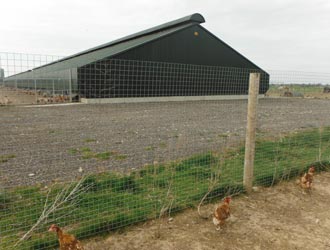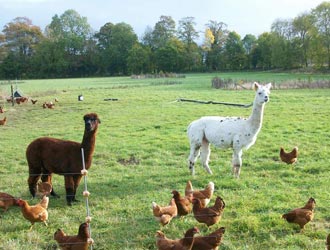Predator control
Predators, primarily foxes, but also dogs, mink and badgers can cause panic in a flock leading to outbreaks of feather pecking. The most effective way to control against foxes is to use electric and poultry fencing around the range, this is sometimes complemented by llamas and alpacas. In order for a fence to be fox proof it needs to be tall and secure all the way round the range.
 |
|
 |
|
A six foot fence is often quoted as being high enough to prevent a fox jumping over. Otherwise a 5 foot fence with an overhang can work. Ideally the fence should also be buried underground and turned outwards to prevent foxes digging in. Fences should be checked on a regular basis for potential entrances.
|
Any grass or vegetation touching the electric wire will leak current to earth and if wet will soon short the fence our making it ineffective, so vegetation around the fence needs to be cleared regularly.
|
 |
 |
|
Alpacas and llamas are becoming increasingly popular with free range producers who are having problems protecting their flocks against foxes. They make effective guards and will chase away foxes and encourage more hens to range.
|
Alpacas can be bought for between £400 and £700.
|